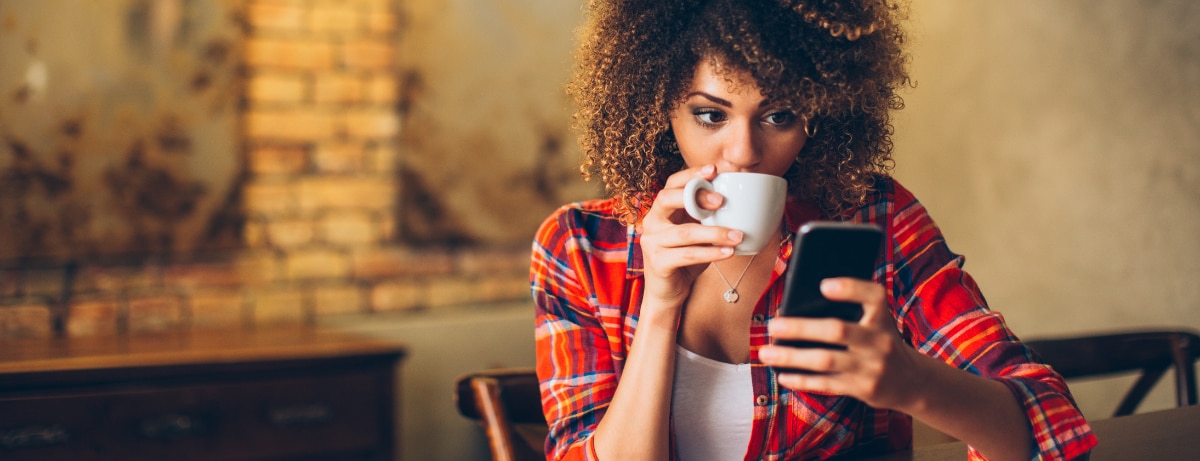10% off £35
Code:SAVE
What is osteoporosis?

Osteoporosis is a condition that affects the bones. You can reduce your risk of developing it by arming yourself with all the facts. Here’s a guide to it.
Most of us know osteoporosis is something to do with bones, but arming yourself with all the facts about the condition can help reduce your risk
Written by Helen Foster on February 11, 2019 Reviewed by Dr Rob Hicks on February 22, 2019
Osteoporosis is often called ‘the silent disease’ and although it affects over three million people in the UK,1 there’s currently no cure. But there’s a lot you can do to help protect yourself – and it’s not just drinking more milk.
What is osteoporosis?
Osteoporosis is a condition where the bones become weak and fragile, so they are more likely to break. Someone could trip and fall in the street and break a bone, or – if things get very bad – something as simple as a forceful sneeze can cause a fracture.2 Often, breaking a bone is the first sign that you have osteoporosis, which is why it’s known as ‘the silent disease’. Bones don’t tend to hurt or ache when they start to weaken, so there are usually no obvious symptoms. The only potential signs include a sudden loss of height or curving of the spine,3 but many people often mistakenly put these down to old age.
What causes osteoporosis?
Our bones are constantly evolving; every day bone is being broken down and rebuilt. Before the age of 30, we build bone faster than the rate at which it is broken down. But after 30 – and particularly post-menopause – that balance tips and we begin to break down more bone than we make. If you didn’t ‘bank’ enough bone in your early years, your bones could become fragile – putting them at risk of fracture – as you age.4 But that doesn’t mean there’s nothing you can do to boost your bone health as you get older.
Who is most at risk of osteoporosis?
Although men and women can be affected, women lose more bone density after the menopause due to falling oestrogen levels.5 If you experience early menopause, you’ll have lower oestrogen levels for much longer, which increases your risk. Osteoporosis can run in families, so having a parent with the condition could also increase your risk. Add in being underweight or a history of eating disorders such as anorexia, and your risk is further increased.6 In all these cases, talk to your GP about having a bone density test.
Why should we take osteoporosis seriously?
Breaking a bone is painful and inconvenient when you’re young, but when you’re older, it can lead to complications that limit your mobility and, in turn, increase frailty. One 2017 study revealed the risk of dying within one year was three times higher in older people who had fractured a bone than in the general population.7 It’s a devastating impact for a disease that, in many cases, can be prevented with some simple lifestyle changes.
How to reduce your risk of osteoporosis
Bone density hits its peak in our late 20s,8 so the more bone you build up before this age, the greater reserves you have to call on. However, you can still do a lot in your 40s, 50s and beyond to help support bone growth, while you can also do less of the things that cause bone to break down.
These include:
- eating a diet rich in bone-supporting calcium – green leafy veg, calcium-enriched plant milks, dairy foods, and nuts and seeds are all great sources of this essential nutrient
- getting enough vitamin D – we need vitamin D to absorb calcium properly but we don’t make enough naturally in the UK during the winter months, so you could consider a supplement9
- following a Mediterranean diet – a 2018 study by the University of East Anglia found that elderly people with osteoporosis who ate a more Mediterranean-style diet, who also took at vitamin D supplement, lost bone mass slower than those not following the diet10
- exercise – the NHS says weight-bearing exercise such as running, walking, and muscle-strengthening exercises using your body weight (think squats and lunges) can help build bone mass,11 while a 2017 Australian study discovered that post-menopausal women with low bone mass who followed a specific weight-bearing exercise regime just twice a week for 30 minutes, saw an increase in bone density12
- stopping smoking – scientists aren’t sure exactly how or why smoking cigarettes damages our bone health, but they do know that it plays a key role13
Advice is for information only and should not replace medical care. Please check with your GP before trying any remedies.
- NHS. Osteoporosis https://www.nhs.uk/conditions/osteoporosis/
- As above
- National Osteoporosis Foundation. What is osteoporosis? https://www.nof.org/patients/what-is-osteoporosis/
- Mayo Clinic. Bone Health: tips to keep your bones healthy https://www.mayoclinic.org/healthy-lifestyle/adult-health/in-depth/bone-health/art-20045060
- NHS. Osteoporosis – causes https://www.nhs.uk/conditions/osteoporosis/causes/
- As above
- Klop C, et al. The epidemiology of mortality after fracture in England: variation by age, sex, time, geographic location and ethnicity https://www.ncbi.nlm.nih.gov/pmc/articles/PMC5214576/
- British Nutrition Foundation. Women – osteoporosis https://www.nutrition.org.uk/healthyliving/lifestages/women.html?start=7
- NHS. Vitamin D https://www.nhs.uk/conditions/vitamins-and-minerals/vitamin-d/
- Jennings A, et al. A Mediterranean-like dietary pattern with vitamin D3 (10 µg/d) supplements reduced the rate of bone loss in older Europeans with osteoporosis at baseline: results of a 1-y randomized controlled trial https://academic.oup.com/ajcn/article/108/3/633/5051862
- NHS. Exercises for strong bones https://www.nhs.uk/live-well/exercise/exercises-for-strong-bones/
- Watson SL, et al. High‐Intensity Resistance and Impact Training Improves Bone Mineral Density and Physical Function in Postmenopausal Women With Osteopenia and Osteoporosis: The LIFTMOR Randomized Controlled Trial https://onlinelibrary.wiley.com/doi/full/10.1002/jbmr.3284
- Ward KD, Klesges RC. A Meta-Analysis of the Effects of Cigarette Smoking on Bone Mineral Density https://www.ncbi.nlm.nih.gov/pmc/articles/PMC5352985/
Related Articles
Shop by wellness goal
Sign up for exclusive offers
Plus, get expert advice to support your health & wellness straight to your inbox when you sign up to Holland & Barrett emails.
Read our
privacy policy














